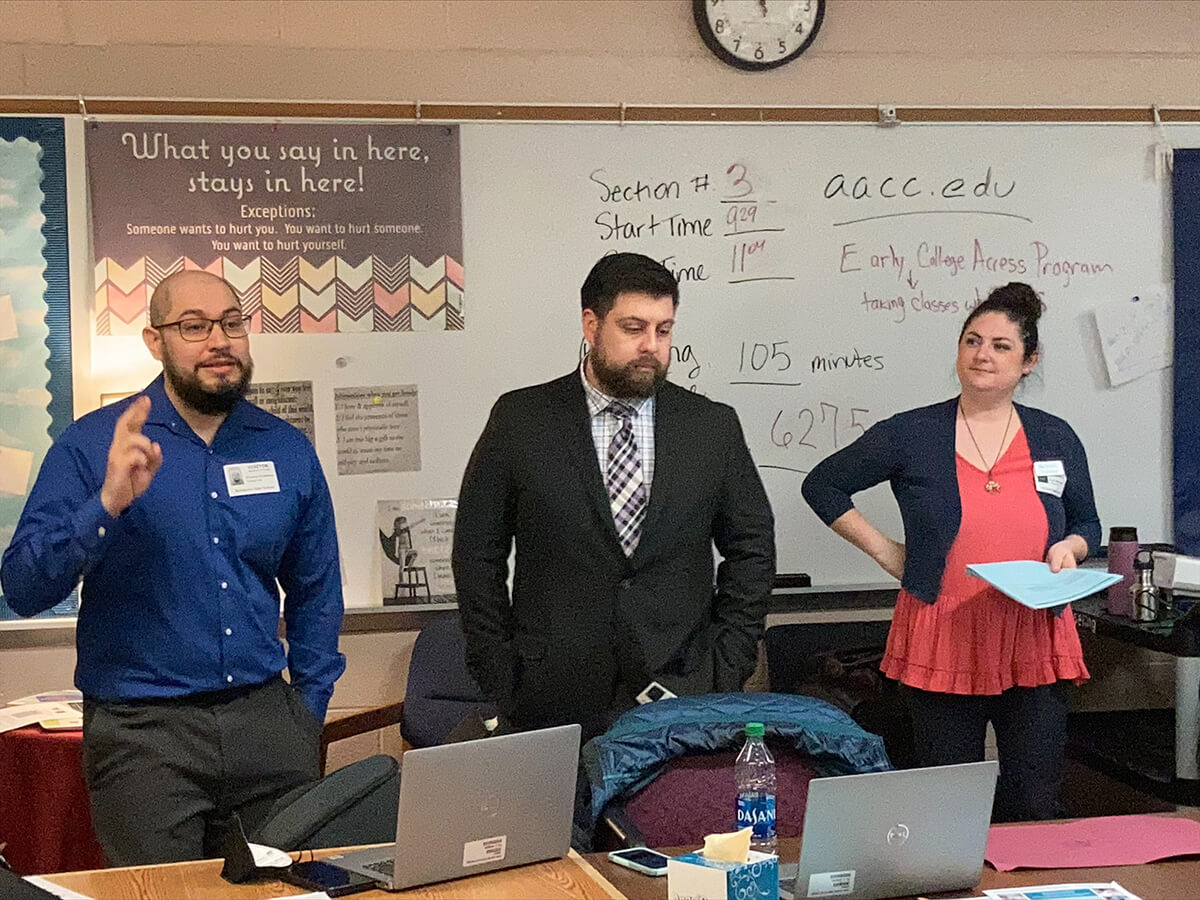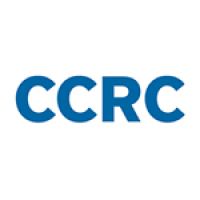By Owen Silverman Andrews and Dana Schwartz Marron
In 2020, Anne Arundel Community College and Anne Arundel County Public Schools were poised to launch a summer bridge program for rising high school seniors designated as English learners (ELs). Staff chose the 30-hour English for Academic Purposes-Capstone Grammar and Editing course at the college to build up the English proficiency of high school ELs who would then be more likely to test out of EL designation before graduating high school.
The idea for the course grew out of conversations that began in 2019 between English Language Learning (ELL) staff at the college and their school district counterparts. The college staff also participated in CCRC’s 2019 conference on developmental education reform and were influenced by CCRC research on dual enrollment, an emerging part of higher education in which high school students take community college courses for college credit.
But just four months before the summer bridge course was set to start, it was disrupted by the COVID-19 pandemic. The two-year pause, however, allowed for deeper, more long-term collaboration between the community college, the school district, and CCRC. During this time, CCRC published an equity-minded data visualization tool that put into stark relief the inequitable design of dual enrollment programs in Maryland that were limiting ELs’ access to this high-impact, cost-effective coursework.
How Equal Is Representation in Dual Enrollment in Maryland?
Note. Data are from the Civil Rights Data Collection, 2017-18 school year.
“English learners have often been left out of postsecondary reform conversations that can have large impacts on their access to college-level, credit-bearing courses,” said Julia Raufman, a research associate at CCRC who focuses on the postsecondary pathways and experiences of ELs. “The field needs to be more inclusive of students with English language learning needs, particularly when the goal is to accelerate college completion.”
The data demonstrated that there is a nationwide problem of lack of access for emergent multilingual immigrant high school students to dual enrollment coursework. According to a CCRC analysis of federal data from the 2017-18 school year, ELs comprised 6% of high school students nationally but only 2% of high school students taking dual enrollment courses. ELs were even more severely underrepresented in dual enrollment in Maryland, where of the more than 7,500 ELs in high school only 23 were reported as having enrolled in any dual enrollment course.
“Dual enrollment courses can increase college-going and college outcomes for high school students, but we also know that exclusionary policies, practices, and mindsets have unnecessarily limited access to these courses for English learners and other marginalized groups,” said John Fink, a senior research associate at CCRC who led the analysis.
On the ground, Anne Arundel Community College staff deepened relationships of trust with the local school district staff, particularly at Annapolis High School, where over 20% of students are ELs. The school’s staff advocated for opening the door even wider to students with lower levels of emerging English proficiency. Additionally, they advocated for giving students access to credit-bearing courses, which led to the pairing of the noncredit Capstone Grammar and Editing course with a one-credit Student Success Seminar.
Two years later, a special event was held in which 19 students applied to the college and registered for the two classes, nearly matching the total number of ELs statewide who were dual enrolled in 2017-2018. The two courses were chosen and staffed with care. An ELL staff member will teach Capstone Grammar and Editing, which has course objectives related to grammar skills that have understandably been deemphasized by school districts across the country focused on communicative, inductive approaches to English learning. The Student Success Seminar will be taught by a world languages Spanish professor. It will not only provide the students with their first degree-applicable college credit but will also orient them to the pathways, protocols, resources, and skills needed to succeed at Anne Arundel Community College and in higher education generally.
 Pictured from left to right: Ricardo Quinteros (AACC admissions officer), Pablo Hernandez (AACC financial aid assistant director), and Dana Marron (English language learning-adult education director) at the special registration event held in May 2022 at Annapolis High School
Pictured from left to right: Ricardo Quinteros (AACC admissions officer), Pablo Hernandez (AACC financial aid assistant director), and Dana Marron (English language learning-adult education director) at the special registration event held in May 2022 at Annapolis High SchoolAfter this summer, the students will be on their way to graduating high school with enhanced language and study skills. They will be well positioned to make informed choices about the college’s noncredit workforce credentials, credit certificates, associate degrees, and transfer patterns to bachelor’s degree-issuing institutions.
“I want to participate in the AACC summer program because I will have more opportunities to prepare myself for the future,” said Dania Canales, a dual enrollment student with dreams of becoming a lawyer. “AACC is a college with a lot of opportunities with scholarships to take advantage of.”
Tema Encarnación, a teacher at Annapolis High School, said the program has the potential to change the trajectory of students’ lives by opening up postsecondary opportunities.
“This program creates a systematic and scaffolded pathway in which students can harness their desire to continue their studies and make their college dreams a reality,” Encarnación said. “I look forward to seeing the impact that this program has in increasing postsecondary opportunities for our students as they open access not only for themselves but for students who come behind them.”
Veronica Reyes has also enrolled in the course.
“Yo quiero entrar a la escuela de verano porque quiero aprender inglés y pienso que es una gran oportunidad para conocer el college para futuras clases,” Reyes said. (In English, this translates to: I want to enter the school this summer because I want to learn English and I think it is a great opportunity to get to know the college for future classes.)
Intentionally inclusive and linguistically sustaining dual enrollment programs are, like higher education itself, not a cure-all for inequity. And yet those involved with the budding English Learners in College Program in Anne Arundel County, Maryland, are resolved that successful movement in that direction creates its own momentum.
Owen Silverman Andrews (oandrews1@aacc.edu) is an instructional specialist of English language learning at Anne Arundel Community College. Dana Schwartz Marron (dsmarron1@aacc.edu) is director of English language learning & adult education at Anne Arundel Community College.





